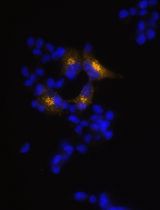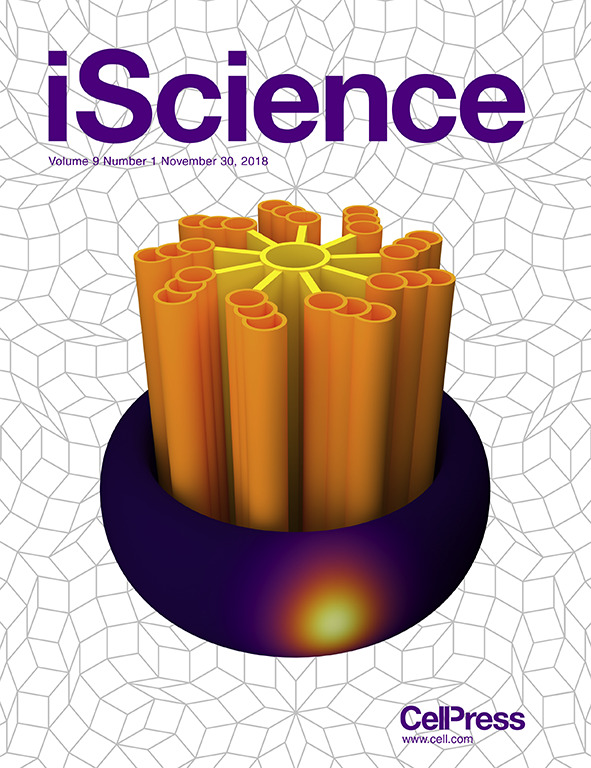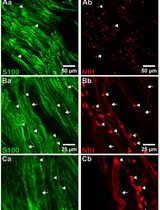- EN - English
- CN - 中文
CRISPR/Cas9 + AAV-mediated Intra-embryonic Gene Knocking in Mice
小鼠体内由CRISPR / Cas9 + AAV介导的胚胎内基因敲除
发布: 2019年07月05日第9卷第13期 DOI: 10.21769/BioProtoc.3295 浏览次数: 6833
评审: David PaulSylvain Baron Anonymous reviewer(s)

相关实验方案

利用EpiCRISPR系统通过靶向DNA甲基化诱导Alpha TC1-6细胞产生胰岛素
Marija B. Đorđević [...] Melita S. Vidaković
2025年10月20日 835 阅读
Abstract
Intra-embryo genome editing by CRISPR/Cas9 has enabled rapid generation of gene knockout animals. However, large fragment knock-in directly into embryos’ genome is still difficult, especially without microinjection of donor DNA. Viral vectors are good transporters of knock-in donor DNA for cell lines, but seemed unsuitable for pre-implantation embryos with zona pellucida, glycoprotein membrane surrounding early embryos. We found adeno-associated virus (AAV) can infect zygotes of various mammals through intact zona pellucida. AAV-mediated donor DNA delivery following Cas9 ribonucleoprotein electroporation enables large fragment knock-in without micromanipulation.
Keywords: CRISPR/Cas9 (CRISPR/ Cas9)Background
Genome editing techniques, particularly the clustered regularly interspaced short palindromic repeats (CRISPR)-associated protein 9 (CRISPR/Cas9) technology, have significantly simplified the generation of transgenic animals. Conventionally, site-directed transgenesis of mice and rats was developed by founder chimeras with genetically modified pluripotent stem cells, which potentially contribute to the germline. However, this conventional strategy is labor-intensive and does not guarantee the germline transmission. Recently, genome editing has enabled site-directed mutagenesis by allowing the direct introduction of required components into embryos at a 1-cell stage. This alternative strategy eliminates the need for any transgenic donor cells, thus resulting in the rapid generation of founder rodents. The genome editing components Cas9 and guide RNA (gRNA) in the CRISPR/Cas9 system, are introduced by microinjection into the zygote pronucleus. Although an intra-embryonic microinjection requires advanced training and expensive micromanipulation equipment, it has enabled the gene-knockout as well as knock-in of large-fragments (Yoshimi et al., 2016; Miura et al., 2018). Alternatively, CRISPR/Cas9 ribonucleoprotein-mediated editing in zygotes can be performed by electroporation; however, large fragment knock-in cannot be efficiently performed (Chen et al., 2016; Hashimoto et al., 2016). The difference between Cas9 RNP-mediated gene knock-in and knockout is the presence of knock-in donor DNA. The donor DNA must be transported inside the cell nucleus; however, this is challenging because of the requirement of a driving force for transport from the cytosol to nucleus as opposed to Cas9 RNP with a nuclear localization signal. Unlike direct microinjection into the pronucleus, electroporation may not introduce a sufficient amount of the donor DNA into the pronucleus. Theoretically, DNA viral vectors are efficient transporters of knock-in donor DNA because they can transfer their genomic DNA to host cells’ nucleus where the in-transit nuclease-mediated degradation of DNA is prevented. However, this strategy seemed unsuitable for pre-implantation embryos possessing a zona pellucida, which inhibits viral infection. In recent studies, we and other groups found AAV can infect mice zygotes with intact zona pellucida (Mizuno et al., 2018; Yoon et al., 2018). We have successfully performed knock-in of a large fragment directly into mice embryos via CRISPR/Cas9 RNP electroporation following a trans-zona pellucida delivery of donor DNA using AAV vectors. Here, we demonstrate a detailed protocol for AAV-mediated intra-embryo knock-in in laboratory mice. This technique does not require either micromanipulation or germline competent pluripotent stem cells, which are successfully established only for rodents to date. AAV can infect various mammalian zygotes, including rats and cows. Thus, this simple genome editing method could be potentially applied to several species.
Materials and Reagents
- 15 ml tube (TPP, catalog number: 91015)
- 50 ml tube (Hitachi, catalog number: S307904A)
- 1.5 ml tube (Simport, catalog number: T332-5S)
- Millex-GV Syringe Filter Unit, 0.22 µm, PVDF, 33 mm (Merck, catalog number: SLGV033RB)
- Millex-HV Syringe Filter Unit, 0.45 µm, PVDF, 33 mm (Merck, catalog number: SLHV033RS)
- 10 ml syringe (Terumo, catalog number: SS-10SZ)
- P200 Tip (QSP, catalog number: 110RL-NEW)
- P1000 Tip (Rikaken, catalog number: RST-4810BR)
- 5 ml pipette (Nunc, catalog number: 170355N)
- 10 ml pipette (Nunc, catalog number: 170356N)
- Aspirating pipette (Corning, catalog number: 357558)
- 10 cm culture dish (TPP, catalog number: 93100)
- PCR tube (FastGene, catalog number: FG-0028DC/SE)
- 35 mm culture dish, non-treated (Iwaki, catalog number: 1000-035)
- Fine glass pipette (Prepared in the laboratory, made of glass tube, ERMA, catalog number: 05-791-0)
- Amicon Ultra-4, 100 kDa (Merck, catalog number: UFC810024)
- C57BL/6N male mice (Japan SLC)
- B6D2F1 female mice (Japan SLC)
- ICR female mice (Japan SLC)
- 293T cell (Clontech, catalog number: 632180)
- Recombinant AAV vector plasmid (for your knock-in cassette flanked by homology arms toward your gene of interest)
- pAAM-MCS2 (recombinant AAV vector backbone, a gift from Steve Jackson, Addgene, Addgene plasmid number: 46954)
- pDGM6 (a gift from David Russell, Addgene, Addgene plasmid number: 110660)
- Cas9 protein (IDT, catalog number: 1074182)
- crRNA (IDT, AltR grade, for your gRNA sequence)
- tracrRNA (IDT, catalog number: 1072533)
- DMEM (SIGMA, catalog number: D5796-500ML)
- FBS (Gibco, catalog number: 10437-028)
- L-Glutamine-Penicillin-Streptomycin solution (SIGMA, catalog number: G1146-100ML)
- Trypsin-EDTA (0.05%), phenol red (Thermo, catalog number: 25300-120)
- Distilled water (Wako, catalog number: 043-16785)
- BES (SIGMA, catalog number: B4554)
- NaCl (SIGMA, catalog number: 28-2270-5)
- Na2HPO4 (Wako, catalog number: 197-02865)
- NaOH (Wako, catalog number: 198-13765)
- CaCl2·2H2O (Wako, catalog number: 031-00435)
- AAVpro Purification Kit (All Serotypes) (Takara, catalog number: 6666) (This kit contains AAV Extraction Solution A plus, AAV Extraction Solution B, Cryonase Cold-active Nuclease, Precipitator A, and Precipitator B)
- EDTA-2Na·2H2O (SIGMA, catalog number: 09-1420-5)
- 10x D-PBS(-) (KCl 0.2% w/v, KH2PO4 0.2% w/v, NaCl 8.0% w/v, Na2HPO4 1.15% w/v, pH 7.1-7.7) (Wako, catalog number: 048-29805)
- M2 medium (Merck Millipore, catalog number: MR-015P-5D)
- KSOM (Merck Millipore, catalog number: MR-020P-5D)
- Mineral oil (SIGMA, catalog number: M8410-1L)
- MEM-EAA (Gibco, catalog number: 11130-051)
- MEM-NEAA (Gibco, catalog number: 11140-050)
- Hyaluronidase (SIGMA, catalog number: H4272-30MG)
- Opti-MEM I medium (Gibco, catalog number: 31985-062)
- Pregnant mare serum gonadotropin (PMSG) (Aska Pharmacies)
- Human chorionic gonadotropin (hCG) (Aska Pharmacies)
- 1x PBS (see Recipes)
- DMEM supplemented with 10% FBS (see Recipes)
- 2x BBS (see Recipes)
- 150 mM Na2HPO4 (see Recipes)
- 2.5 M CaCl2 (see Recipes)
- 0.5 M EDTA (pH 8.0) (see Recipes)
- KSOM-AA medium (see Recipes)
Equipment
- P20 pipette (GILSON, catalog number: F123600)
- P200 pipette (GILSON, catalog number: F123601)
- P1000 pipette (GILSON, catalog number: F123602)
- 37.0 °C bath (lab armor, catalog number: M714)
- Centrifuge (TOMY, catalog number: AX-310)
- Centrifuge (HITACHI, catalog number: CR21GII)
- Thermal cycler (Takara, catalog number: TP350)
- Electroporator (BEX, catalog number: GEB15)
- 1 mm gap electrode (BEX, catalog number: LF501PT1-10)
- Stereoscopic microscope (Nikon, model: SMZ1000)
- Thermo plate for microscope (TOKAI HIT, model: TP-SMZSL)
- Anaesthetic vaporizer (Muromachi Kikai, model: MK-A110)
- CO2 incubator (Wakenyaku, model: 9300E)
- -80 °C freezer (Panasonic, model: MDF-U700VX-PJ)
Procedure
文章信息
版权信息
© 2019 The Authors; exclusive licensee Bio-protocol LLC.
如何引用
Mizuno, N., Mizutani, E., Sato, H., Kasai, M., Nakauchi, H. and Yamaguchi, T. (2019). CRISPR/Cas9 + AAV-mediated Intra-embryonic Gene Knocking in Mice. Bio-protocol 9(13): e3295. DOI: 10.21769/BioProtoc.3295.
分类
干细胞 > 多能干细胞 > 再生医学
发育生物学 > 细胞生长和命运决定 > 再生
细胞生物学 > 细胞工程 > CRISPR-cas9
您对这篇实验方法有问题吗?
在此处发布您的问题,我们将邀请本文作者来回答。同时,我们会将您的问题发布到Bio-protocol Exchange,以便寻求社区成员的帮助。
提问指南
+ 问题描述
写下详细的问题描述,包括所有有助于他人回答您问题的信息(例如实验过程、条件和相关图像等)。
Share
Bluesky
X
Copy link











